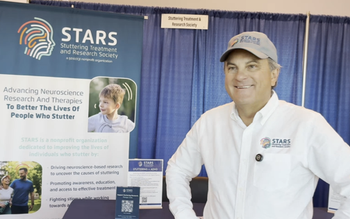
Making a Real Difference: Biomarkers and Novel Treatment Development for Serious Mental Illness
Did you catch the President's Plenary at the ACNP 2023 Annual Meeting?
CONFERENCE REPORTER
“We should be investing a lot into medication development for serious mental illness. It is a long, challenging, arduous process, but by working together, we can make a difference for our patients,” said Husseini Manji, MD, FRCPC—professor at Oxford University, visiting professor of psychiatry at Duke University School of Medicine, and co-chair of the UK Government Mental Health Mission—during his President’s Plenary session at the American College of Neuropsychopharmacology 2023 Annual Meeting.
“We are streamlining medication development for serious mental illness, but we cannot cut corners. Despite our best intentions, 90% of things fail,” Manji—who leads a team globally whose goal is to discover and develop new therapeutics for major neurologic, psychiatric, and pain-related diseases with a high unmet need for effective treatments—shared with the audience.
Manji focused his discussion on “making a real difference” in serious neuropsychiatric and neurodegenerative disorders, specifically via biomarkers. He used Alzheimer disease/dementia as an example, explaining that the advances in our understanding of the biology of Alzheimer disease led to the development of reliable biomarkers for early identification of the disease. His previous research indicates that biomarkers from blood and spinal fluid, along with imaging biomarkers, allow for better identification of drug effects on the brain.1
This, in turn, increases the likelihood of successful drug development such as lecanemab. “We worked together to develop readily accessible biomarkers. The approval of lecanemab would not have happened without working together. We have known forever that we need to intervene early to identify at risk patients,” said Manji.
He further pushed this concept with the issue of anhedonia, an extremely common symptom of major depressive disorder that affects 70% of patients and is associated with more severe depressive symptoms and functional impairment. Can we potentially target a specific area of the brain to reduce particular symptoms, such as anhedonia?
“We need clear biomarkers and a specific brain region of interest,” emphasized Manji. By identifying the exact location of interest, the process of novel treatment development becomes possible. “If you can identify a particular neuronal circuit, and then target that local circuit…”
How do we de-risk novel treatment development? Manji suggested a number starting points:
1. Improve target identification
2. Develop human models that predict efficacy
3. Better phenotyping
4. Clinical trials with a transdiagnostic approach
Manji, who pioneered a ketamine-based nasal spray that received “breakthrough therapy” designation from the US Food and Drug Administration, was frequently mentioned in sessions throughout the day in everything from eating disorders to novel therapeutics.
References
1. Manji H. Foreweord. In: Cummings J, Kinney J, Fillit H, eds. Alzheimer's Disease Drug Development. Cambridge University Press; 2022.
Newsletter
Receive trusted psychiatric news, expert analysis, and clinical insights — subscribe today to support your practice and your patients.

















